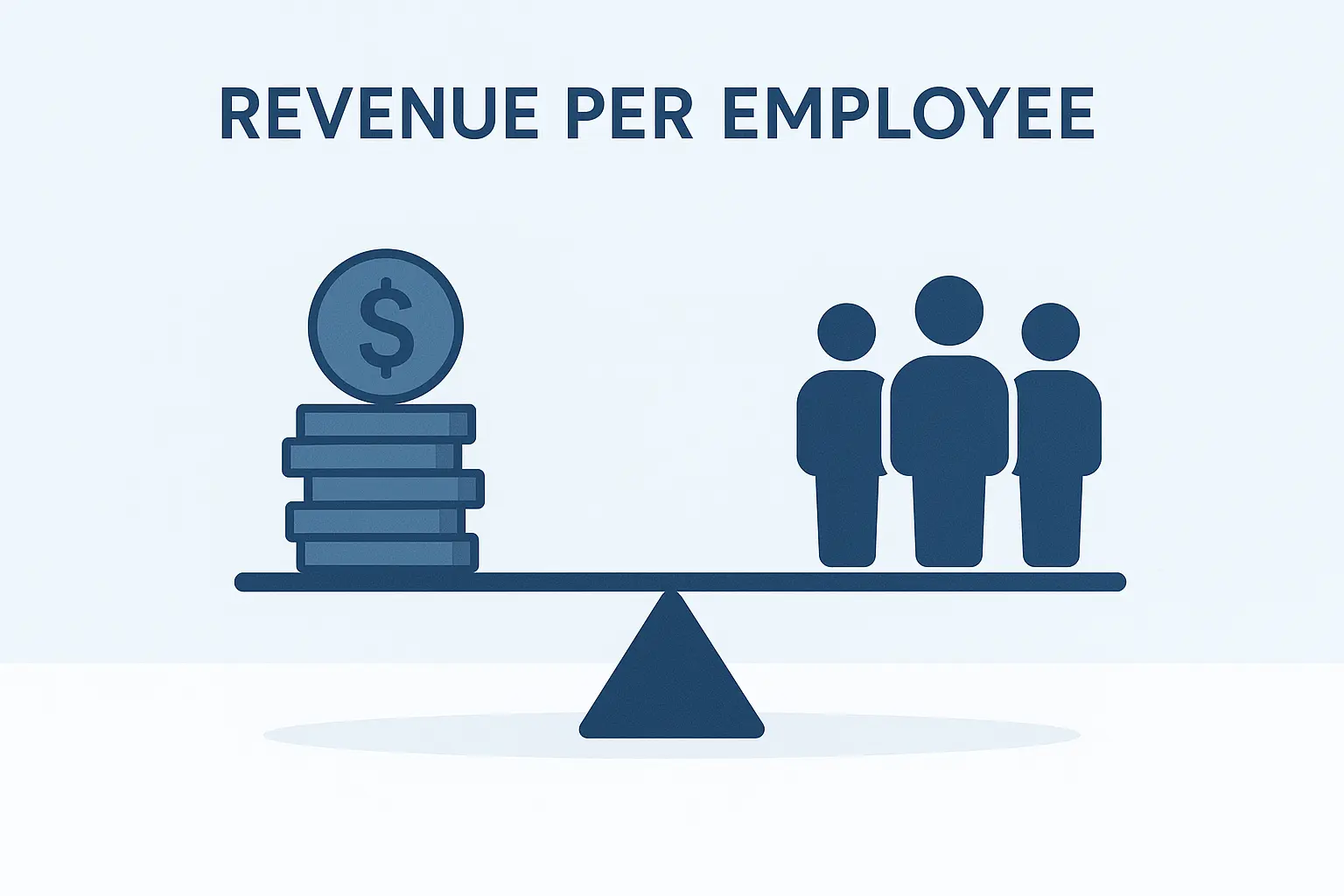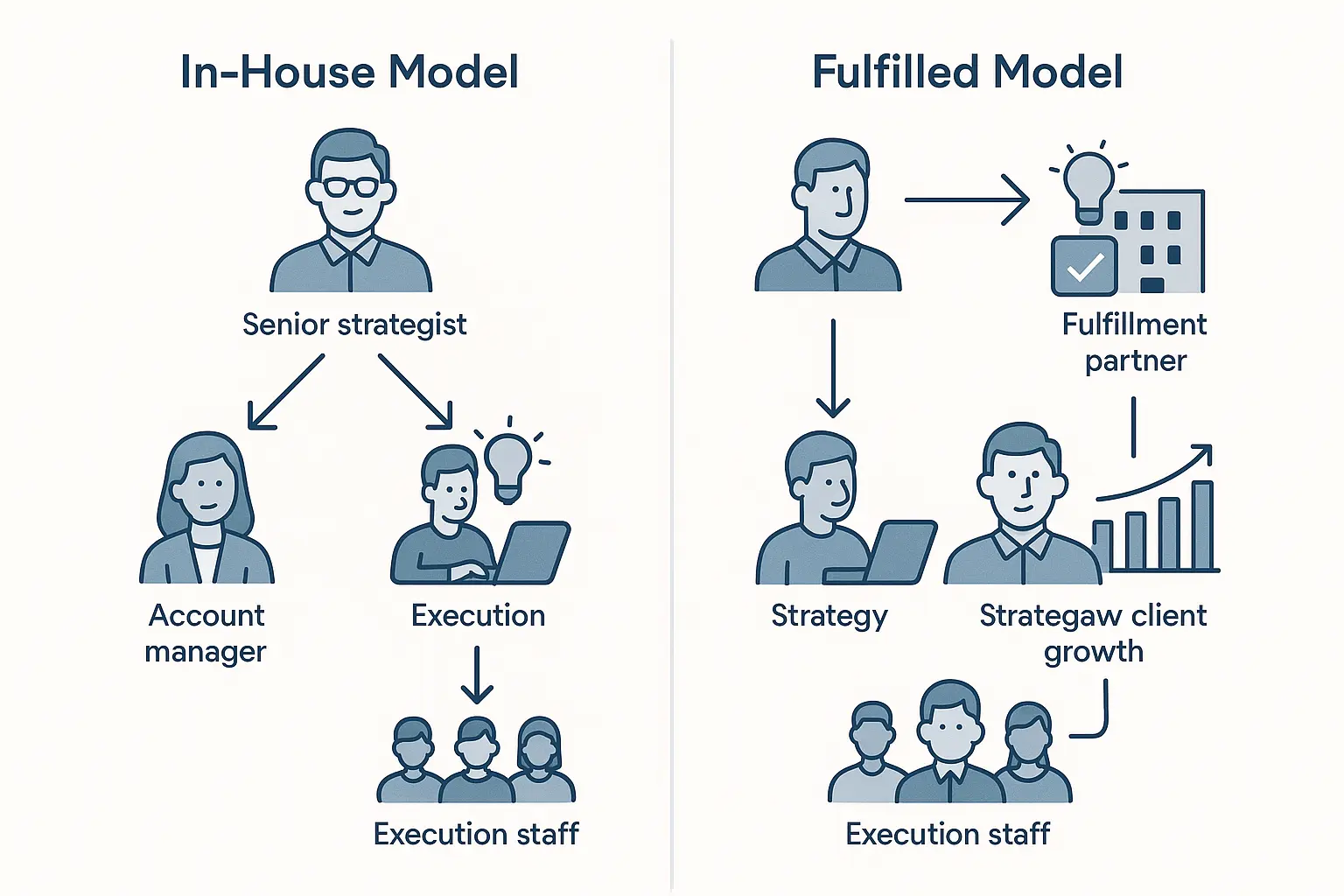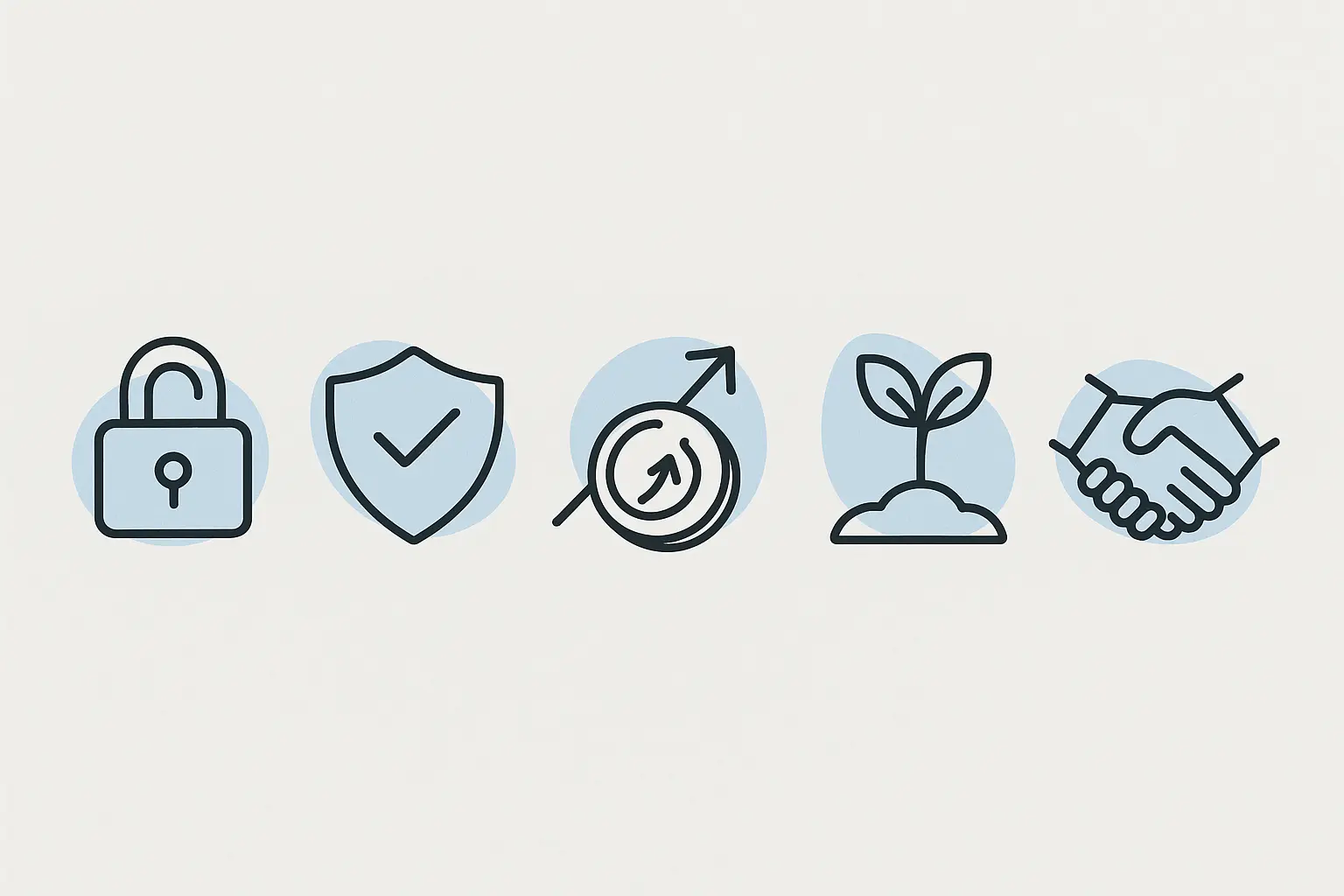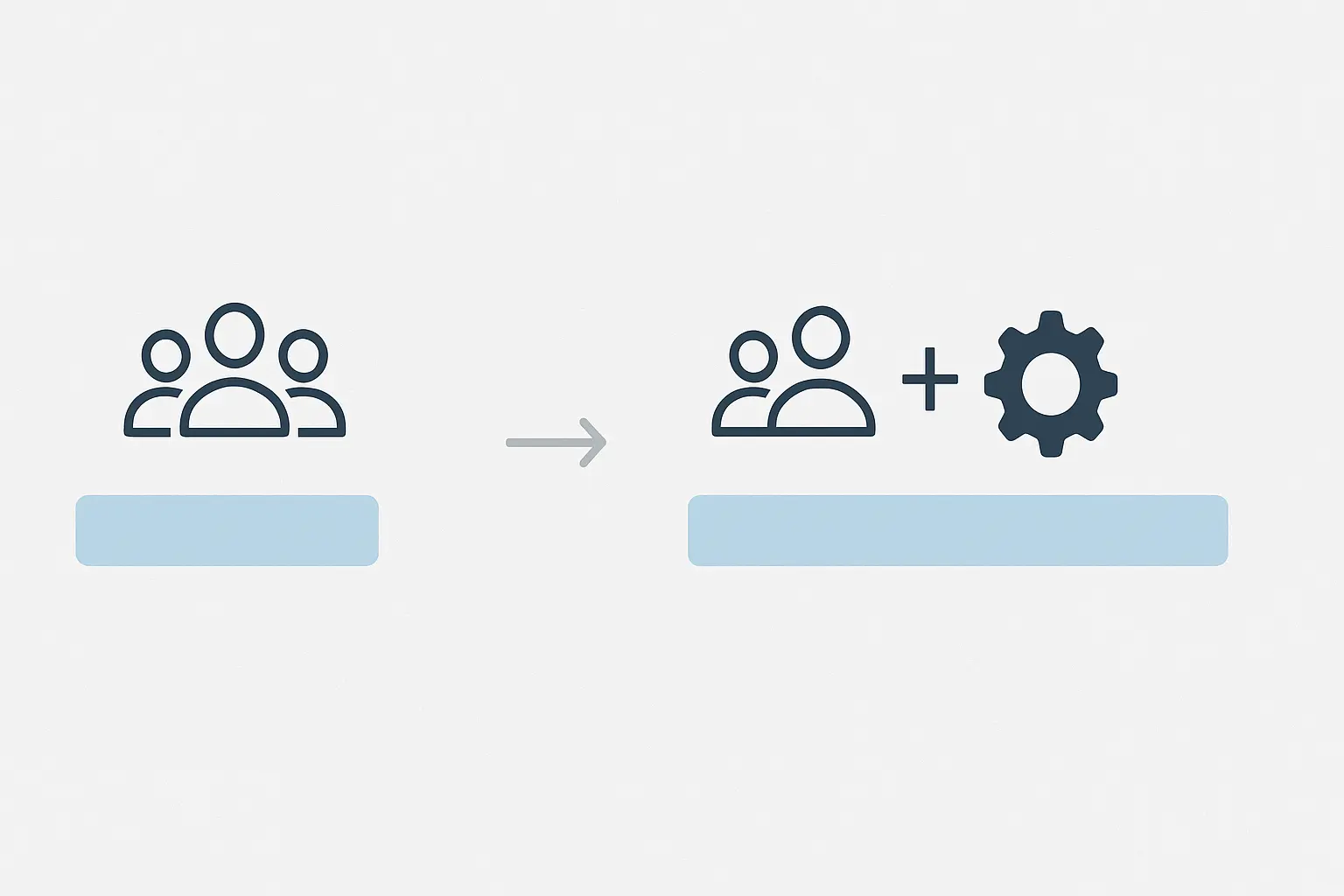Ever feel like your agency is growing, but your bank account isn’t? Landing bigger clients and watching your total revenue climb should feel like a win, yet somehow, the profit margins feel tighter than ever.
You’re working harder, your team is maxed out, and you’re starting to wonder if this is what scaling is supposed to feel like.
If this sounds familiar, you’re not alone. Most agencies focus on one metric above all others: gross revenue. But what if that’s the wrong number to watch?
There’s a quieter, more powerful metric that tells the true story of your agency’s health and scalability: Revenue Per Employee (RPE). It’s the key to not just growing bigger, but growing smarter.
What is Revenue Per Employee, and Why Does It Matter?
Think of Revenue Per Employee as your agency’s efficiency score. The formula is simple:
Total Annual Revenue / Number of Full-Time Employees = Revenue Per Employee
While gross revenue measures the size of your operation, RPE measures its efficiency, revealing how much revenue each team member generates. According to industry benchmarks, a healthy RPE for a marketing agency is around $150,000 to $200,000.
Where does your agency stand?
If your number is below that range, it often signals a hidden problem: your most valuable resources—your people—are likely spending too much time on tasks that don’t generate the highest value.
The Scaling Trap: Why Hiring More Can Hurt Your Profitability
When a new, large client signs on, what’s the first instinct? Hire more people. It seems logical, but this is where many agencies fall into the scaling trap.
The moment you hire a new employee, your RPE goes down. That’s because it can take up to 6 months for a new in-house SEO specialist to become fully productive and profitable. During that ramp-up period, they are a net cost to the business. The result is a painful dip in profitability right when you need it most.
With every growth spurt, the cycle repeats: you win, you hire, profitability dips, and you spend months just trying to climb back. You’re caught on an execution treadmill, running faster just to stay in the same place.
The Execution Treadmill vs. The Strategic Flywheel
Let’s look at two types of agencies.
The Overloaded Agency: The founder and senior strategists spend their days buried in execution—running reports, building links, optimizing meta tags, and managing project queues. They’re so deep in the “doing” that they have no time for the “thinking” that truly moves the needle for clients.
The Strategic Agency: The core team is freed from the daily grind of execution. Their time is dedicated to high-value activities: developing client strategy, building relationships, identifying new growth opportunities, and selling new business.
Research shows that high-performing agencies dedicate over 60% of their team’s time to client strategy and relationship management, not just execution. They’ve found a way to step off the treadmill and start a strategic flywheel that builds momentum.
How do they do it? They don’t hire more execution specialists. They partner with one.

The Fulfillment Partner: Your Secret Weapon for RPE Growth
A fulfillment partner is an external, white-label team that handles the tactical execution of your client work. It’s not about losing control; it’s about strategically delegating the tasks that are bogging your core team down.
Think about the impact:
-
Instantly Increase Capacity: You can take on more client work without adding a single person to your payroll. Your RPE numerator (revenue) goes up, while your denominator (employees) stays the same.
-
Focus on High-Value Work: Your best minds are unleashed to do what they do best—build strategies that get incredible results and strengthen client relationships, leading to higher retention and more referrals.
-
Drastically Lower Costs: A fulfillment partner can reduce your operational costs by up to 40% compared to hiring, training, and managing an in-house team. This boosts your profit margin, a key component of a healthy RPE.
By partnering for execution, you can strategically offer more services—like comprehensive white-label SEO services—without the risk and cost of building an entire department from scratch.

A Quick Look at the Math
Let’s imagine a small agency with 5 employees and $500,000 in annual revenue.
Their RPE is $100,000 ($500k / 5). They’re busy, but not as profitable as they could be.
Now, they bring on a fulfillment partner to handle their SEO execution. Their core team is freed up to manage more clients and focus on strategy. They can now service $1,000,000 in annual revenue with the same 5 employees.
Their new RPE is $200,000 ($1M / 5).
They’ve doubled their Revenue Per Employee without doubling their headcount. They’re no longer just a bigger agency; they are a more profitable, scalable, and resilient one.

Frequently Asked Questions About Boosting Agency RPE
What exactly is a good Revenue Per Employee target?
While every agency is different, aiming for the $150k-$200k range is a strong indicator of financial health and operational efficiency. If you’re below $100k, it’s a clear sign that it’s time to re-evaluate how your team’s time is being spent.
Won’t using a fulfillment partner mean I lose control over quality?
This is a valid concern, and it’s why choosing the right partner is crucial. A true fulfillment partner operates as an invisible extension of your team. They follow your processes, use your branding on all deliverables, and are committed to your standards. Their success is tied directly to your clients’ success.
Is this strategy only for large agencies?
No, in fact, it’s often most impactful for small- to mid-sized agencies. It allows a smaller team to compete with much larger players by giving them immediate scale and expertise without the massive overhead. It’s a way to break through growth plateaus without taking on huge financial risks.
How is a fulfillment partner different from hiring freelancers?
While freelancers can be great for one-off projects, a fulfillment partner provides consistency, scalability, and integrated processes. You’re not managing multiple individuals; you’re leveraging a proven system built for agencies. You get the power of a full team without the management headache.
Your Next Step: From Overloaded to Optimized
Stop focusing only on top-line revenue. Start looking at your Revenue Per Employee. It’s the metric that will reveal the path to truly profitable growth. By shifting your team’s focus from execution to strategy and leveraging a fulfillment partner to handle the rest, you can build a more resilient, profitable, and scalable agency.
Ready to see how this model can transform your agency? Explore our fulfillment process and enablement model to learn how you can scale intelligently, starting today.

